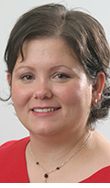Tier One Program grants promote transformational learning projects

Ahmed Ali

Shannon Van Zandt

Manish Dixit

Eric Ragan
This fall, students at the Texas A&M College of Architecture will design building envelopes from auto assembly line waste, research problems facing communities on the Texas-Mexico border, and create a virtual reality platform to test engineering designs in three concurrent multidisciplinary projects.
The projects, identified as “extraordinary learning experiences,” are funded by Texas A&M University [Tier One] (http://dof.tamu.edu/Grants/Tier-One-Program-Grant) Program (TOP) grants through the Dean of Faculties.
Slated to take place during long semesters through spring 2020, the projects were selected from a pool of proposals by a university faculty committee to promote multidisciplinary education.
Reusing non-toxic industrial waste
Graduate students will explore the creative reuse of non-hazardous manufacturing waste in a project aimed at repurposing “offal,” or sheet metal refuse from automotive manufacturing, as a construction material used to cover building exteriors.
“There are economic, environmental and societal benefits to reusing the approximately 7.6 billion tons of non-hazardous, solid waste generated each year by the United States’ manufacturing industry,” said Ahmed Ali, the project’s principal investigator and assistant professor of [architecture] (http://dept.arch.tamu.edu/) .
The multidisciplinary project, involving students from architecture, construction science, mathematics, engineering technology and industrial distribution, will be led by Ali and Manish Dixit, an assistant professor of [construction science] (http://cosc.arch.tamu.edu/) and co-principal investigator. Project advisers include representatives from [General Motors] (https://www.gm.com/) , the [U.S. Business Council for Sustainable Development] (http://usbcsd.org/) and by [Jan Jongert] (http://superuse-studios.com/index.php/category/team/janjongert/) , a Dutch architect who focuses on sustainable design.
Border community research
Beginning this fall, undergraduate urban planning and landscape architecture students will travel with their counterparts in history and civil engineering to the Texas-Mexico border to conduct research on U.S.-Latin American relations while exploring urban planning and engineering issues confronting impoverished border communities.
“By taking the classroom to ‘the field’ in the Texas borderlands, students from Latino backgrounds will learn more about their communities and non-Latino students will learn about a different culture,” said Sonia Hernandez, the project’s principal investigator and an associate professor of history. She is conducting the project with Shannon Van Zandt, a project co-principal investigator and professor and interim head of the [Department of Landscape Architecture and Urban Planning] (http://laup.arch.tamu.edu/) .
The project, explained principal investigator Sonia Hernandez, an associate professor of history, will create globally sensitive students better able to devise solutions to problems regarding a wide range of border issues including housing, health, demographic shifts, race and ethnicity, immigration policy, infrastructure and environmental and economic challenges.
Participating students will choose a border-related research topic to research during three, four- to five-day trips to the region. They will also learn different research methodologies from project professors to apply to their group and individual assignments.
Developing a virtual reality platform
[Visualization] (http://viz.arch.tamu.edu/) and aerospace engineering students will develop open-source, virtual reality software aimed at preparing K-12 students for jobs requiring expertise in science, technology, engineering and mathematics.
The software will teach users how to create, test and improve engineering designs better than traditional, classroom-based instruction, said Gregory Chamitoff, professor of engineering practice and project principal investigator.
The learning opportunity this software will presents to young users is important, said Chamitoff, because engineering design practices will soon be transformed dramatically.
“In the near future all objects, products, structures —anything that is manufactured — will be designed, built, tested and experienced virtually before they exist in the real world,” he said.
As part of the project, Viz students led by Eric Ragan, assistant professor of visualization and co-principal investigator, will devise intuitive means for users to interact with the platform, create modules related to architecture, and share their knowledge of 3-D graphics and animation with fellow team members.
While developing the platform, project students will gain valuable experience with state-of-the-art computational, modeling and VR tools.
Ragan’s faculty project collaborators also include Daniele Mortari, professor of aerospace engineering, and Sharath Girimaji, professor of aerospace and mechanical engineering.
Richard Nira
rnira@arch.tamu.edu
Tags
- academics
- architecture
- construction science
- feature
- interdisciplinary
- landscape architecture & urban planning
- outreach
- partnerships
- planning
- sustainability
- technology
- undergraduate work
- visualization
Related Posts

Summit explored education advances with ‘smart’ cities

Student-built tiny homes destined to house homeless

Treatment center designs aid PTSD, head-injured vets
Undergraduates sharpen research skills in program
Follow Us
Facebook Twitter Vimeo Youtube Flickr RSS
Recent Posts

Planning prof heads study of disaster housing aid

A message from the dean

Former student remembered as expert planner

Leading educator named new head of Architecture Dept.






_thumbnail_small.png)
